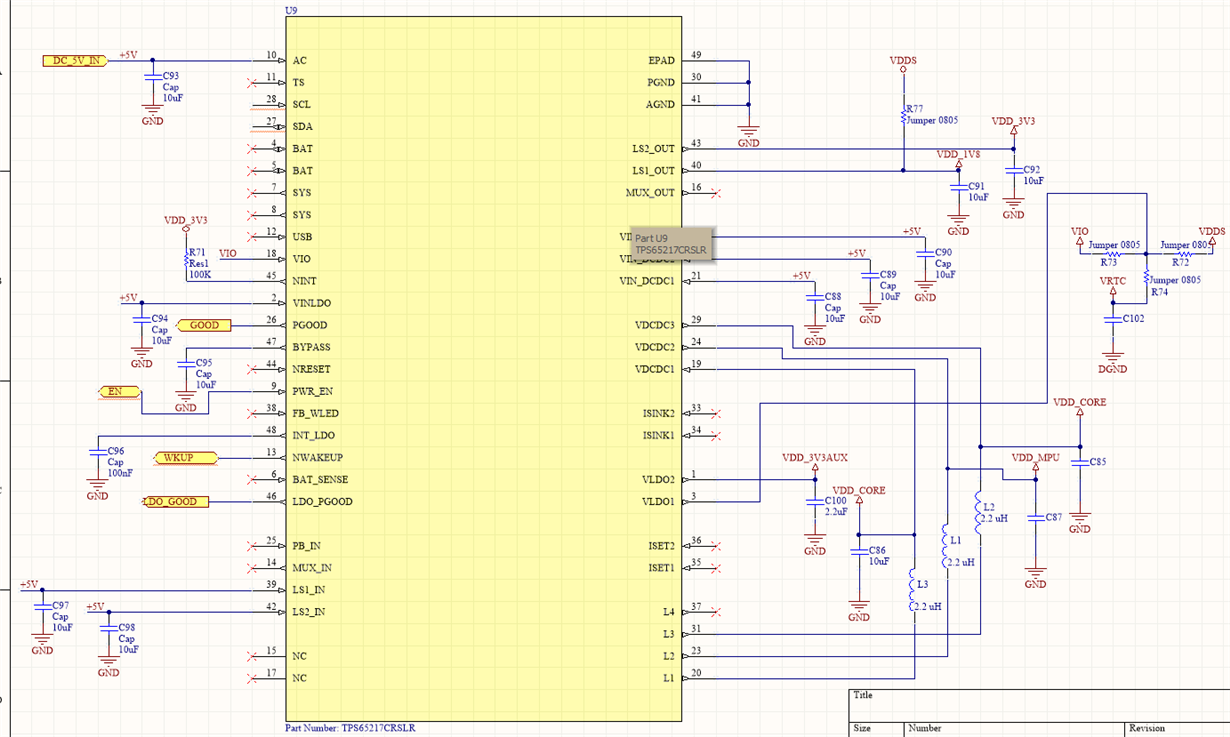Hello,
I have inherited a project since a team member left the company. I have just received the boards that were designed and noticed that the PMIC is not outputing any voltages. and the current consumption is 0.01A (apparently the PMIC is trying to do something but isn't able to).
After a review of the datasheet and the schematics this is what I noticed ... the SYS pins were left floating. According to the datasheet there are many pins that say "This pin must be connected to the SYS pin", so it's safe to assume that he made a mistake.
The thing is that I distinctly remember that the original person to design the board (another coleague who left) connected the sys pins together with the input 5V (the 5V that goes into AC pin) and of course the board didn't work properly, but I distinctly remember that in order to fix this and make the board work I took a box cutter and cut the connection between the sys pins and the 5 V input, isolating the SYS pins from the rest of the ciurcuit, just connecting them to each other and the board came to life (all those pins that require the 5 V were connected directly to the 5 V input).
I tried measuring one of its outputs (oin 20 connected to an inductor) and noticed that it tried to do something, it went up´to ~250 mV before going back to 0 V. This tells me that the PMIC is not dead, but there is something wrong.
Unfortunately this is not my project, I didn't design it, I was a member of the embedded software team, but now the hardware and embedded software teams are only 1 and now I have hardware responsabilities from designs that I didn't review nor designed. It seems that I have already answered my question ... that I probably need to cut up this board and do some wire ups to get it working, but i really need a second opinion before I start cutting anything.
If I go by my previous cut that isolated SYS pins from the rest of the circuit but left them connected to each other, then all I need to do is short those pins. But something tells me that I'm gonna have to cut many pins and wire everything up to get it working. Any advice?


